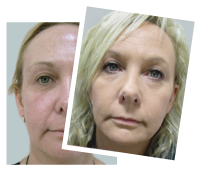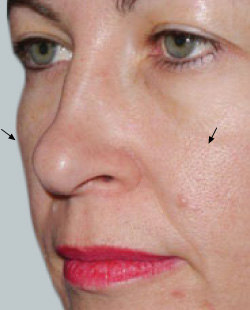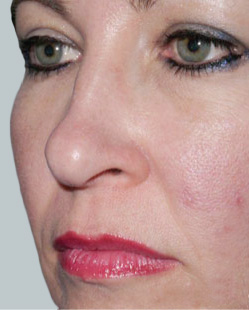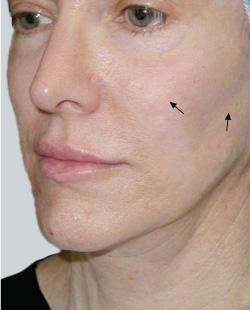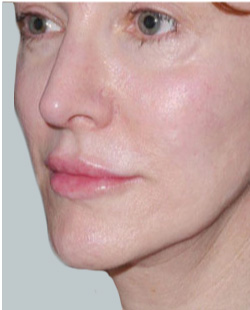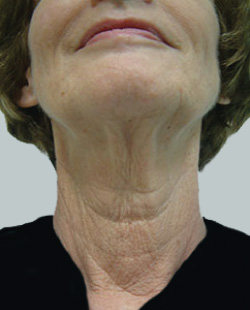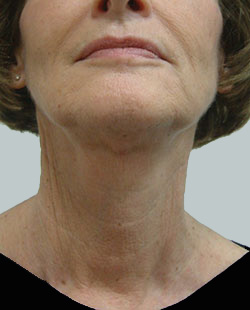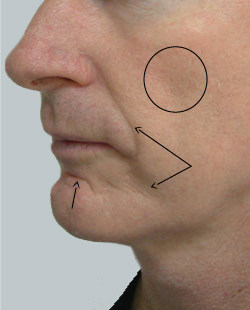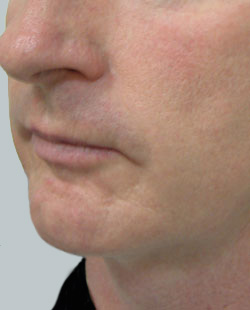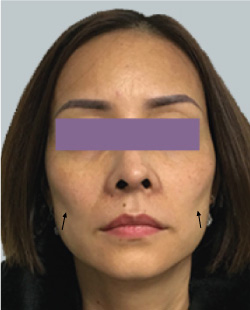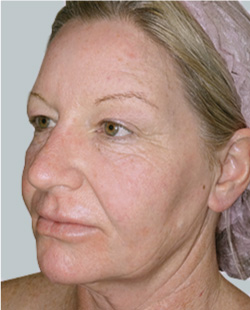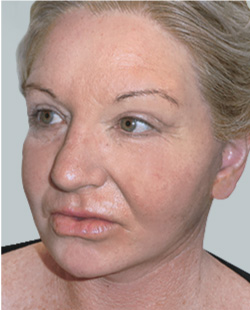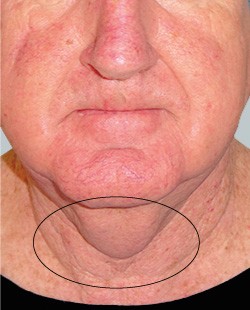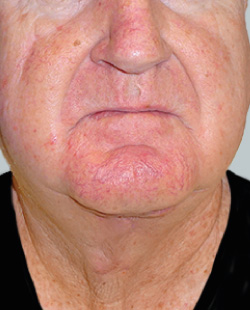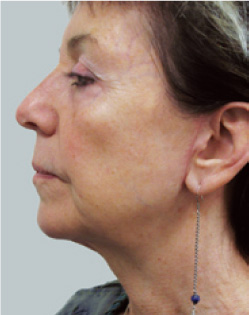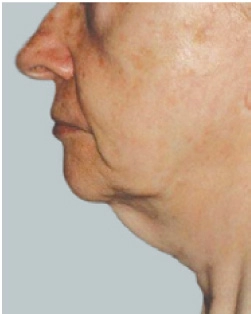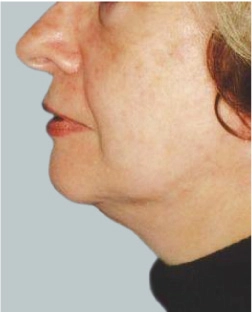A deep plane facelift is a sophisticated surgical procedure that targets the deeper structures of the face to address signs of facial aging and achieve a more natural-looking rejuvenation. Unlike traditional facelifts that primarily tighten the skin, the deep plane technique focuses on repositioning the deeper structural tissues, including the superficial muscular aponeurotic system (SMAS). By working beneath the SMAS layer, this technique creates a tension-free skin closure, which not only enhances the longevity of the results but also minimises the risk of complications.
The deep plane facelift aims to restore youthful facial contours by lifting and repositioning the deeper tissues, providing a comprehensive and lasting improvement in facial appearance.
How Does a Deep Plane Facelift Work?
A deep plane facelift releases key facial ligaments, allowing for a more significant and natural repositioning of facial structures. This technique not only improves sagging but also enhances the contours of the jawline, cheeks, and midface without excessive tension on the skin.
Deep plane facelifts are highly effective in addressing skin laxity and can be combined with neck procedures for comprehensive rejuvenation. They offer significant advantages, including a more natural look and longer-lasting results, making them a preferred choice for many patients.
Unlike standard facelifts that separate the skin from the SMAS layer, the deep plane facelift keeps both layers intact and lifted together. This technique provides a dramatic but natural transformation, especially in individuals with deep nasolabial folds, loose jowls, and volume loss in the midface. By addressing sagging at its root cause—the deeper structural layers of the face—the procedure offers a more youthful, sculpted appearance without an overdone look.
Key Features of a Deep Plane Facelift
- Targets deeper facial tissues, providing a more natural and youthful appearance.
- Reduces tension on the skin, eliminating the “overly tight” or “windblown” look.
- Effectively lifts the midface, nasolabial folds, and jowls, addressing facial sagging comprehensively.
- Effectively targets loose skin in both the face and neck areas, addressing skin laxity.
- Offers longer-lasting results, typically 10-15 years, compared to 7-10 years for SMAS facelifts.
- Improves skin texture and facial volume loss by repositioning fat pads and deep facial structures.
- Customisable procedure, allowing for combination with neck lifts, eyelid surgery, or fat grafting for a more complete rejuvenation.
Benefits of a Deep Plane Facelift
A deep plane facelift provides multiple advantages over standard facelift techniques:
- More Natural Results – No “windswept” or overly tight appearance.
- Longer-Lasting – Results typically last 10-15 years.
- More Comprehensive Lifting – Effectively targets midface, jawline, and neck.
- Minimal Scarring – Incisions are placed in natural folds, reducing visible scars.
- Preserves Blood Supply – Helps maintain skin vitality and natural healing.
The deep plane technique creates a strong foundation for facial contours, ensuring tension-free skin closure and maximum mobilization of soft tissue, ultimately leading to dramatic and sustainable rejuvenation in the facial appearance.
Ideal Candidate for a Deep Plane Facelift
The ideal candidate for a deep plane facelift is someone experiencing advanced signs of facial ageing, such as deep nasolabial folds, facial ptosis, excess skin, and loss of facial volume.
This procedure is suitable for both men and women who are in good physical health and have realistic expectations about the outcomes. Candidates should be willing to follow post-operative instructions to ensure a smooth recovery and optimal results. Consulting with a qualified surgeon is essential to determine if a deep plane facelift is the right choice, as they can assess individual needs and recommend the most appropriate treatment plan.
Anatomy of Facial Aging
Aging is a complex process that affects multiple layers of the face, including the skin, fat pads, muscles, and supporting ligaments. Over time, the skin loses elasticity, facial fat shifts downward, and ligaments weaken, resulting in sagging skin, deeper wrinkles, and loss of facial volume.
Key Changes in Facial Aging
- Loss of collagen and elastin: The skin becomes thinner and less resilient.
- Fat pad descent: Fat that once provided youthful fullness shifts downward, leading to hollowed cheeks and a sagging jawline.
- Weakened ligaments: Facial ligaments that hold skin and deeper tissues in place become lax, allowing gravity to pull the face downward.
- Volume loss: The midface loses natural fat, exacerbating deep nasolabial folds and marionette lines.
A deep plane facelift specifically targets these age-related changes by lifting and repositioning deeper facial tissues, restoring volume, and redefining facial contours.
Step-by-Step Deep Plane Face Lift Process:
The deep plane facelift surgical procedure typically lasts 3-6 hours under general anaesthesia.
- Incision Placement – Typically made along the hairline and around the ears to ensure minimal visible scarring.
- Ligament Release – The surgeon releases four key retaining ligaments, allowing deeper tissues to be repositioned.
- Deep Plane Lifting – Both skin and SMAS layers are lifted together, preventing skin tightness and allowing for natural movement and expression.
- Tissue Redraping – The lifted tissues are secured in a higher position, restoring facial structure and definition.
- Incision Closure – The skin is carefully closed without excessive tension, minimizing scarring and healing time.
When considering deep plane facelift surgery, it is crucial to be aware of the associated risks and necessary precautions. A skilled interprofessional team is essential for proper patient evaluation and to address potential complications, such as facial nerve injury and hematoma formation, during both the surgery and post-operative care.
A key benefit of the deep plane technique is that it preserves the natural blood supply to the skin. This enhances healing, reduces risks of complications, and improves overall skin health post-surgery. Unlike standard facelifts where tension is placed on the skin, the deep plane facelift allows for more natural facial movement and longevity of results.
Deep Plane Facelift vs. Other Facelift Techniques
A deep plane facelift procedure is an advanced surgical method designed to lift and rejuvenate the face by repositioning both skin and deeper facial structures as a single unit. Unlike traditional facelift techniques, which mainly focus on tightening the skin or lifting the superficial muscular aponeurotic system (SMAS), the deep plane facelift works beneath the SMAS layer, releasing facial ligaments to reposition and elevate deeper tissues.
Many facelift procedures exist, but the deep plane technique stands out due to its effectiveness in lifting deeper facial layers. Here’s how it compares to other techniques:
| Facelift Type | Layer Targeted | Duration of Results | Natural Look |
|---|
| Traditional Facelift | Skin only | 5-7 years | Moderate |
| SMAS Facelift | SMAS layer | 7-10 years | Good |
| Deep Plane Facelift | Skin + Deeper Structures | 10-15 years | Excellent |
- Best for: Individuals with moderate to severe facial sagging who want long-lasting, natural results.
- Avoids the “pulled” look that can occur with traditional facelifts.
The Science Behind the Deep Plane Facelift
The deep plane facelift is an innovative surgical approach that focuses on releasing specific facial retaining ligaments to allow the deeper tissues and fat pads to be repositioned naturally.
- Superficial Musculoaponeurotic System (SMAS) Lift: Unlike traditional facelifts that lift only the skin, the deep plane facelift lifts the skin and SMAS layer together.
- Facial Ligament Release: This procedure involves releasing four key retaining ligaments:
- Zygomatic ligament – responsible for lifting the cheek and midface.
- Mandibular retaining ligament – essential for improving jawline definition.
- Masseteric cutaneous ligament – allows for repositioning of lower face tissues.
- Cervical retaining ligament – supports the lower face and neck area.
- Preservation of Blood Supply: By lifting deeper tissues in their natural planes, the procedure maintains a healthy blood supply, which minimises bruising, improves healing, and prevents complications.
Preoperative Consultation
A successful deep plane facelift begins with a detailed consultation with a board-certified plastic surgeon who specialises in this advanced technique. During this consultation, the surgeon will evaluate your facial anatomy, skin quality, and degree of aging, ensuring that a deep plane facelift is the right choice for your needs. It is essential to discuss the risks, expected results, recovery process, and any additional procedures that may enhance your outcome.
- Comprehensive Facial Assessment – Your surgeon will analyze skin laxity, volume loss, and overall facial structure, identifying which areas will benefit most from lifting and repositioning.
- Customised Treatment Plan – A deep plane facelift is tailored to each patient’s unique aging concerns, focusing on jawline definition, midface elevation, and deep tissue restoration for a natural, tension-free result.
- Pre-Surgery Instructions – This includes lifestyle and medical advise to help achieve optimal results and recovery.
Deep Plane Facelift Recovery Timeline
- Week 1: Swelling and bruising peak; rest with head elevated.
- Week 2-3: Return to light activities, swelling starts reducing.
- Month 3+: Final results visible as tissues fully heal.
Will I Have Scarring?
Yes, but scars are discreetly placed and typically fade significantly over time. The incisions are hidden along the hairline and behind the ears, making them nearly invisible once healed.
Scar Care Tips:
- Use silicone gel or scar creams to minimise scar appearance and support healing.
- Avoid direct sun exposure and apply SPF 50+ sunscreen to protect incision areas.
- Follow your surgeon’s post-care instructions to prevent irritation and ensure optimal scar fading.
With proper care, most patients find that scars become barely noticeable within 6-12 months.
How Long Do Deep Plane Facelift Results Last?
A deep plane facelift offers one of the longest-lasting facial rejuvenation solutions, with results lasting 10-15 years. While the natural aging process continues, the improvements achieved with a deep plane facelift mean that you will always look younger than if you had never undergone the procedure.
Maintaining Your Results:
- Adopt a healthy lifestyle – A balanced diet, hydration, and avoiding smoking will help maintain skin quality.
- Follow a consistent skincare routine – Using medical-grade skincare products, retinol, and sun protection will support skin health and elasticity.
- Consider periodic maintenance treatments – Non-surgical options such as laser therapy, RF skin tightening, or dermal fillers can help preserve your results over time.
Choosing a Deep Plane Facelift Surgeon
Selecting the right surgeon for a deep plane facelift is crucial for achieving a successful and satisfying outcome. It’s important to choose a surgeon with extensive experience in facial plastic surgery, particularly in the deep plane facelift technique. A qualified surgeon should have a thorough understanding of facial anatomy and be able to tailor the procedure to meet individual needs. Researching the surgeon’s credentials, reading patient reviews, and scheduling a consultation are essential steps in this process.
During the consultation, discuss your goals and expectations to ensure the surgeon can provide the results you desire.
Why Choose Me Clinic for Your Deep Plane Facelift?
At Me Clinic, we combine surgical expertise with a patient-first approach to deliver outstanding results for deep plane facelifts. Here’s why patients choose us:
- Our specialist plastic surgeons have extensive experience in deep plane facelifts.
- We offer a customised treatment plan tailored to your specific anatomy and goals.
- Our clinic prioritises safety, comfort, and natural-looking results.
- We provide comprehensive post-surgery support to ensure a smooth recovery and long-lasting outcomes.
Book a Consultation with a Me Clinic Specialist Plastic Surgeon
Taking the first step towards a deep plane facelift procedure does not need to be hard. Booking a consultation at Me Clinic gives you access to experienced plastic surgeons who understand the importance of precision and patient care.
During your consultation, you can learn more about the procedure, talk about your specific concerns, and get a tailored approach that fits your needs and recovery timeline.
Get in contact with Me Clinic today to book a consultation and assessment via our contact form.
Or alternatively, you can contact Me Clinic in the following ways:
Dr Gary Kode
Specialist Plastic Surgeon (MED0001405964)
30+ years experience
25,000+ procedures
-Dr Gary Kode is a highly experienced Specialist Plastic Surgeon with over 33 years in Aesthetic and Reconstructive Surgery, having performed approximately 25,000 procedures. A Fellow of the Royal Australasian College of Surgeons (FRACS), he is renowned for his expertise in facelift surgery and breast augmentation, delivering natural and refined results.
Read moreDr Amir Tadros
Specialist Plastic Surgeon (MED0001375519)
18 years experience
10,000+ surgeries
+Mr. Amir Tadros is a triple board-certified Specialist Plastic Surgeon with over 25 years of experience, performing thousands of cosmetic and reconstructive surgeries in Australia, the UK, and internationally. His extensive training in world-renowned plastic surgery units and expertise in complex cases ensure patients receive the highest level of surgical precision and care.
Read moreDr David Ross
Specialist Plastic Surgeon (MED0001124797)
27 years experience
15,000+ surgeries
+Dr David Ross is a Specialist Plastic Surgeon with over 27 years of experience in plastic surgery and cosmetic procedures. Dr Ross also has public hospital appointments in supervisor roles, overseeing the training of 25 Specialist Plastic Surgeons during that time. Dr David Ross has published many articles on reconstructive and cosmetic plastic surgery while educating general practitioners.
Read more
Further reading of facelift surgery
Medical references for deep plane facelift
- Mayo Clinic: Face-lift
{Visit} - National Library of Medicine: Deep Plane Facelift
{Visit}
Surgical Warning: Any surgical or invasive procedure carries risks. Before proceeding you should seek a second opinion from an appropriately qualified health practitioner.
Read more on the Risks of Surgery
How long do results last?
Typically 10-15 years, longer than other facelift techniques.
Is the surgery painful?
Mild to moderate discomfort managed with pain relief.
When can I return to work?
10-14 days post-surgery, depending on swelling.
Will there be visible scarring?
Incisions are placed in natural folds, making scars virtually invisible over time.
What are the risks and considerations of a deep plane facelift?
While a deep plane facelift is considered safe in experienced hands, potential risks include:
- Temporary numbness or facial asymmetry.
- Bruising and swelling, which typically resolve within weeks.
- Rare complications such as infection or prolonged swelling.
Can a deep plane facelift be combined with other procedures?
Yes, it is commonly performed alongside a neck lift, eyelid surgery, or fat grafting for enhanced facial rejuvenation.
How soon can I exercise after a deep plane facelift?
Light walking is encouraged after surgery, but strenuous exercise should be avoided for at least four weeks.
Does a deep plane facelift address volume loss?
While it lifts facial tissues, some patients may benefit from fat grafting or dermal fillers to restore volume in the cheeks and temples.
What type of anesthesia is used?
A deep plane facelift is typically performed under general anesthesia, but some cases may allow for deep sedation.
How do I maintain my facelift results?
Good skincare, a healthy lifestyle, and periodic non-surgical treatments like laser therapy or injectables can help prolong results.





